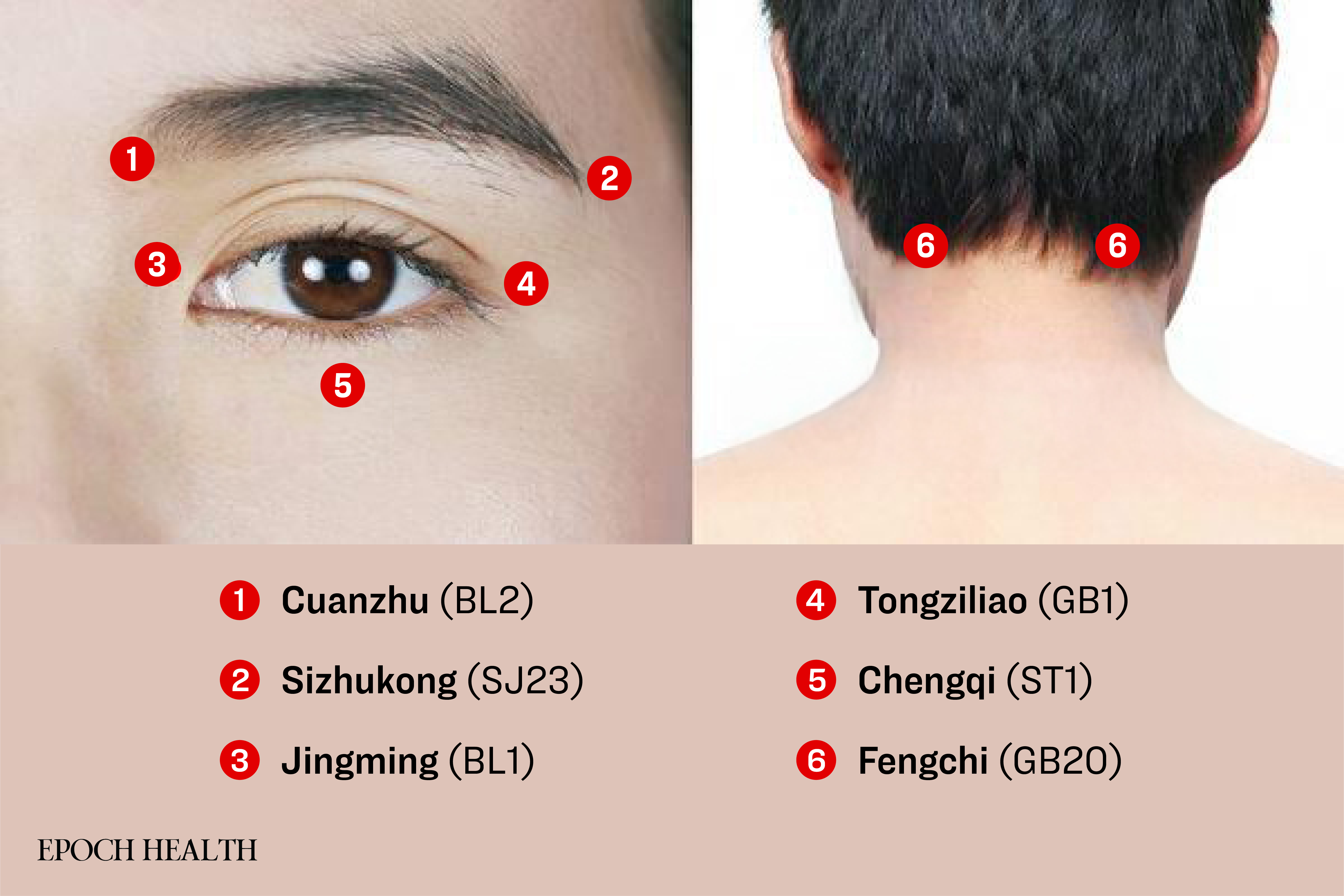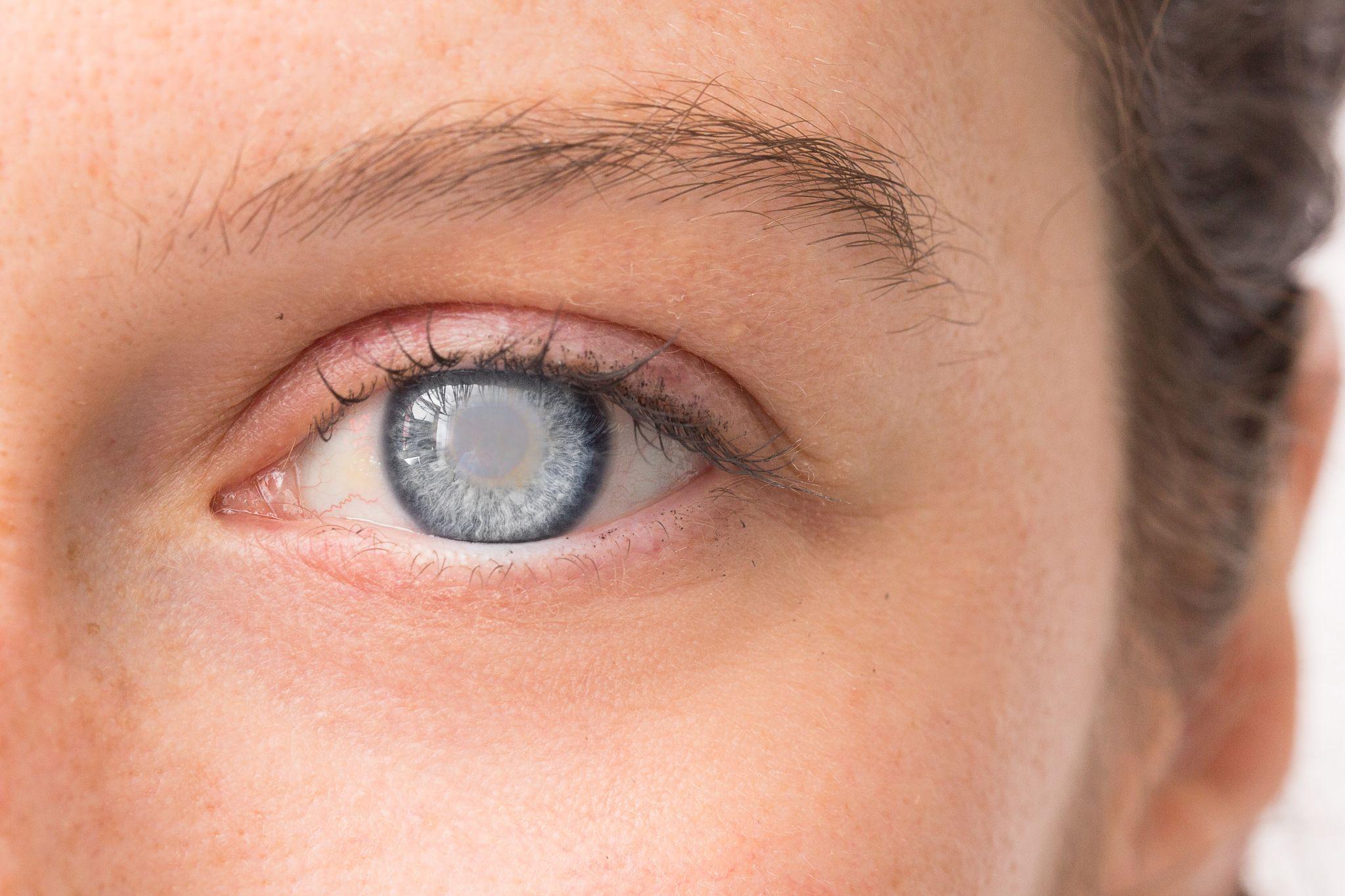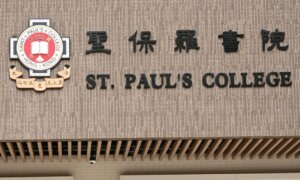Ms. Chen Lin, when approaching her fifties, spent more than 10 hours each day in front of her computer screen. She developed cataracts and her right eye turned white, due to extreme myopia that exceeded 1000 degrees. She visited a traditional Chinese medicine (TCM) practitioner who taught her specific eye exercises. Despite the advancement of her disease, after six months of daily practice, her cataracts disappeared.
You might be wondering how these eye exercises work and whether they truly have miraculous effects on treating cataracts. Kuo-Pin Wu, the Taiwan Xinyitang Heart Clinic superintendent, shared this set of eye exercises and the TCM methods for treating cataracts.
Oxidative Stress
Cataracts are the leading cause of blindness worldwide. The human lens is normally transparent. Cataracts occur when the lens degenerates, causing it to swell and turn white, leading to blurry vision. In severe cases, the eye can become as white as a bright moon, and light cannot penetrate.
Patients with severe cataracts require surgical treatment, which involves an intraocular lens implant to improve vision. For patients with mild to moderate cataracts, it may be possible to reverse them through traditional Chinese medicine treatment (TCM) combined with home eye care techniques, according to Mr. Wu.
Research has revealed oxidative stress as one of the main mechanisms leading to cataracts, where nucleic acids, proteins, and lipids in the lens denature, resulting in mutations and programmed cell death. Mr. Wu stated that electromagnetic radiation is a common risk factor for cataracts, especially at low doses. Even widely used LED lights in daily life can damage the lens epithelium, leading to the overproduction of reactive oxygen species.
Cataract patients have lower levels of peroxidase (enzymes involved in speeding up various oxidative reactions) in their serum and aqueous humor, making it difficult to resist oxidative damage.
According to modern pharmacological studies, many medicinal plants and natural products used in traditional medicine have antioxidant and anti-cataract effects.
Mr. Wu gave some examples of medicinal plants that are often used to treat cataracts.
Medicinal Herbs for Treating Cataracts
The causes and treatments for cataracts due to aging are numerous. TCM, however, emphasizes a key factor in the cause, involving deficiencies related to aging. According to Mr. Kevin Xiao, a TCM practitioner at the Northern Medical Center in New York, the combination of deficiencies, specifically that of the liver and the kidney, is said to play a key role in promoting eye diseases such as cataracts.
In TCM, the liver has a direct connection to the eyes. If one’s liver becomes deficient, one’s vision will be affected too. Sleeping late, long screen hours, and reading for long periods can all directly harm the liver, says Mr. Xiao.
It is worth noting that the terminologies such as spleen, stomach, liver, and kidney used in TCM do not correspond exactly to the anatomical organs in Western medicine. They refer to the energy systems associated with these organs, rather than just the anatomical structures.
As Mr. Xiao puts it, the five organs are defined through their functions, with each organ related to the others. Therefore in TCM, balance within the body’s internal energy is vital in the treatment of the patient.
Mr. Wu noted that because each person’s body is different, one should consult a TCM practitioner before using any herbs.
The following herbs may be helpful for cataracts, according to Mr. Wu.
1. Tonifying Herbs
Herbs such as Astragalus (Huang Qi), Codonopsis (Dang Shen), Atractylodes (Cang Zhu), Poria (Fu ling), and Rehmanniae (Shu Di Huang) can enhance the body’s immunity, provide antioxidant and anti-aging effects, and are particularly helpful for patients with weak spleen and stomach.
Semen Cuscutae (Tu Si Zi) and goji berries can be used for patients with weak liver and kidney functions, which have a certain preventive effect on age-related cataracts.
2. Blood-Activating Herbs
Herbs such as Angelica root (Dang Gui), red peony root (Chi Shao), and safflower can all improve blood circulation in the eyes while eliminating inflammation, edema, and turbid substances.
A study found that peony (Paeonia lactiflora) extract can delay the process of blood clotting thereby improving blood circulation. According to Mr. Xiao, herbs such as peony are commonly used in TCM to dispel blood stasis and improve the overall flow.
3. Vision-Clearing Herbs
Herbs such as Eriocauli Flos (Gu Jing Cao), Flos Buddlejae (Mi Meng Hua), and Fructus Tribuli (Bai Ji Li) can directly act on the lens, reducing lens opacity.
A study in vitro reveals that Flos Buddlejae can be used to treat cataracts and states that luteolin is a possible bioactive component involved in treating cataracts. Luteolin is a flavonoid common in plant species and can suppress oxidative stress, reduce inflammation, and inhibit programmed cell death.
Eye Exercises and Massage
In addition to taking herbs, patients can also perform eye care massages and exercises, which are also effective in improving vision. The Ming Dynasty’s traditional Chinese medicine text “Yang Sheng Lei Yao (Categorized Synopsis of Health Care)” documented a method to improve cataracts: Every day after waking up, sit cross-legged, keep your mind undistracted, and then rotate your eyes 14 times. After rotating, close your eyes tightly, then quickly open them and relax.
Mr. Wu combined this ancient eye care method with acupoint massage around the head and eyes to create a routine of eye exercises. One of his patients, Ms. Chen, had, as stated above, myopia of nearly 1000 degrees by the age of 25. Since she was about to travel to Italy for six months and could not continue treatment, Mr. Wu advised her to do the eye exercises daily. She diligently practiced them for six months. When she returned to the hospital for a check-up, she found that the cataracts had disappeared.
The following are step-by-step instructions for the eye exercises and massage techniques illustrated below:

Eye exercises. (The Epoch Times)
1. Close both eyes and rotate them clockwise 14 times, then counterclockwise 14 times.
2. Close your eyes tightly for five seconds, then quickly open them and blink repeatedly five times. This action helps promote blood circulation in the eyes.
3. Gently press the lower edge of the eye sockets with your index finger, without applying too much pressure. Start from the lower edge of the eye socket, moving from the inside to the outside, then back and forth slowly, repeating three to five times.
4. Use your thumb to gently press from the inside to the outside along the upper edge of the eye socket, repeating three to five times.
5. Gently stroke outward above the eyebrows from the inside to the outside, repeating this motion 14 times. Then, stroke gently upward just above the eyebrows, repeating 14 times.
Why target this area specifically? There are small branches of the supratrochlear and supraorbital nerves located just above the pupils, and gentle massage in this area can enhance circulation and improve nerve function.
6. Gently massage the inner corner of the eye 14 times. This area is prone to tension in highly myopic individuals, which may cause some pain when pressed. Massaging and loosening this area can help relax your eyes.
7. Massaging acupoints: The Chengqi acupoint is located directly below the pupil, between the lower edge of the eyeball and the lower margin of the eye socket. Gently massaging this acupoint 14 times can enhance the flow of energy and blood circulation in the eyes.
The Cuanzhu, Jingming, Tongziliao, and Sizhukong acupoints are located around your eyes. Gently press and massage these acupoints with the middle and index fingers of both hands, repeating 14 times. Massaging these acupoints improves blood circulation around the eyes and relaxes the nerves on both sides of the head.
Massage the Fengchi acupoint at the back of the head 14 times. Specifically, the acupoint is located below the occipital bone behind the ear, in the depression within the hairline.
People often look at their phones and computers with their heads lowered for extended periods. This posture can cause tension in the tendons at the Fengchi acupoint at the back of the head, resulting in eye pain. Massaging the Fengchi acupoint can quickly alleviate eye soreness and pain, leading to clearer vision.
8. Use your fingers to comb your hair from front to back.

- Regularly massaging these acupoints may improve vision. (The Epoch Times)
From Mr. Wu’s experience with his patients, this set of eye exercises is not only effective in preventing and improving cataracts but also beneficial for other eye conditions such as presbyopia, myopia, and especially pseudomyopia.
Mr. Wu tells of another patient, a 72-year-old female with presbyopia, who performed these eye exercises for approximately two months. As a result, she no longer needs reading glasses, as her vision has become clear.
Daily Eye Care Tips
Mr. Wu also shared some eye care tips, such as blinking and moving the eyes frequently and avoiding prolonged use of electronic devices.
1. Blink Frequently
Blinking promotes tear secretion, which moisturizes the eyeballs and makes the eyes more comfortable. Aim to blink around 20 to 30 times per minute.
2. Rotate Your Eyes
Avoid staring at one spot without moving your eyes when looking at something. For example, when checking the time on a clock, practice moving your eyes from 1 to 12, allowing them to move around frequently. This exercise helps delay eye degeneration.
3. Take Frequent Breaks
It is essential to take frequent breaks when reading, using your phone, or working on the computer. Stop and perform the eye exercises mentioned above from time to time. This is beneficial in relieving eye soreness and blurry vision.
Note: Some herbs mentioned in this article may be unfamiliar, but are generally available in health-food and Asian grocery stores. It is important to note that treatment methods may vary depending on the individual. Please consult a health care professional for a specific treatment plan.












